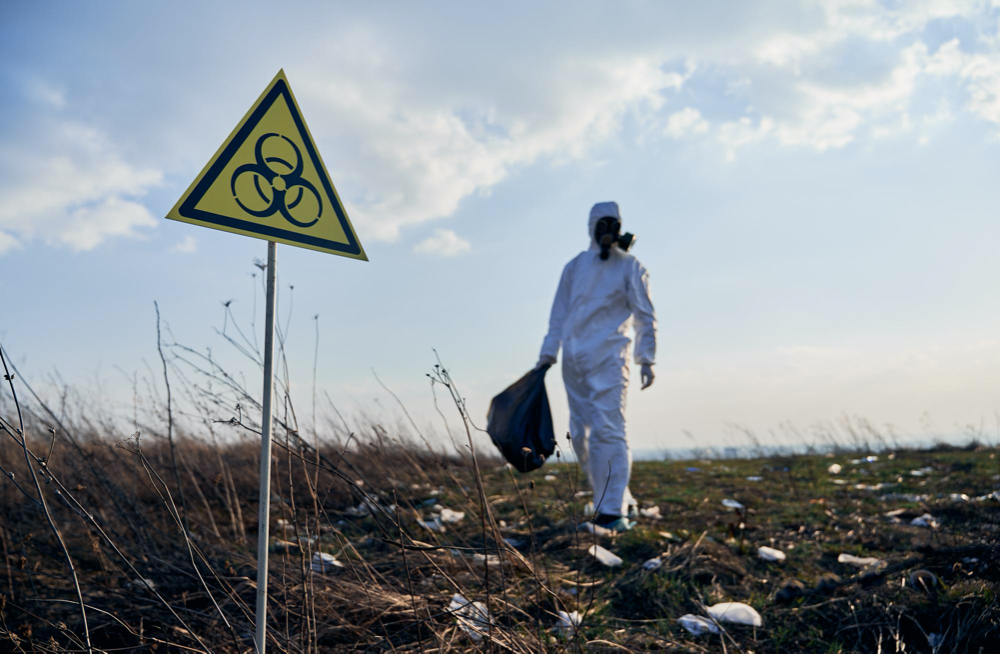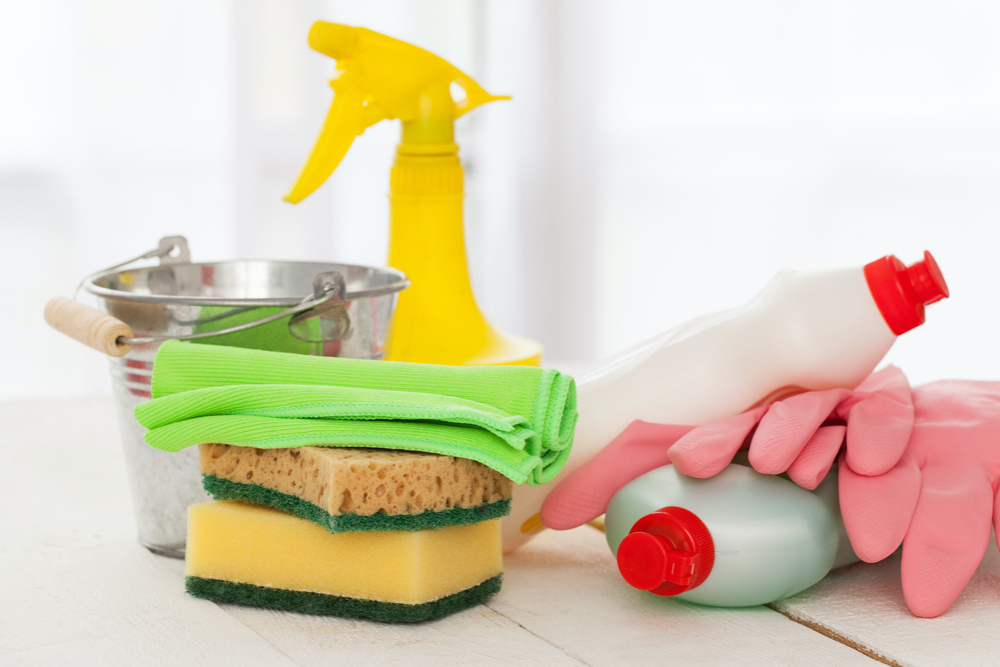- Fast results
- 4,000+ locations
- 4.8 star rating
Need Help? (888) GET LABS



Poisoning occurs when a toxic substance is inhaled, ingested, touched, or injected. This can lead to short-term illnesses leading to brain damage, coma, or death if not removed from the body.
Fortunately, there are different ways to detect poisoning. Aside from looking out for observable symptoms, urine and stool tests, or physical examination, poisoning can also be detected through a blood test. For example, you can take a blood test for heavy metals.
According to statistics, 42% of poisoning exposures involve children ages five and below. Meanwhile, 93% of nonfatal poisonings and 98% of fatalities are recorded among adults older than 19 United States.
Undoubtedly, this can happen to anyone by accident or gradually developed. Moreover, poisoning can occur with alcohol, carbon monoxide, cigarettes, food, mushrooms, plants, chemical and biological agents.
If you suspect that you have been exposed to poison and are experiencing some symptoms like fatigue, nausea, dehydration, or vomiting, you might want to stick around and learn more about this condition.
Poisoning symptoms depend on the substance, amount, and type of contact. Moreover, your age, health condition, and weight can affect your symptoms.
Hence, here are some general poisoning symptoms to look out for:
The risk and complications of poisoning vary depending on the person and the substance. For instance, if you overdose on paracetamol, this will damage your liver or, worse, death.
Even a tiny intake of poisonous substances such as lead, mercury, arsenic, and others could cause complications. As a result, these heavy metal substances can cause seizures, organ failure, coma, or brain damage. Likewise, occupational exposure to these substances can be rampant without proper monitoring.
On the other hand, anyone can also succumb to accidental poisoning outside their workplace.
In the U.S., there are 1.1 million reports of accidental poisoning of children from 5 and under each year. Additionally, more than 9 in 10 poisonings in children happen at home.
Ultimately, if a child who was poisoned is left undiagnosed and treated, this can lead to accidental death or injury.

Household products do not usually cause poisoning when used appropriately and with gentle care.
For example, over-the-counter medications will only become a threat to your health and life if taken beyond the recommended dosage. In the same way, laundry detergent pods are safe to use but can jeopardize your health if eaten intentionally.
Nonetheless, it’s imperative to understand whether or not a common household item can be toxic. Here are products you may want to handle and store with care:
You’d be surprised how toxic substances can be present in everyday household items. Depending on the toxicity level, these substances can lead to mild or severe poisoning.
Likewise, you can also find potent toxicants in your workplace. If you were exposed to these hazardous substances, you need to get tested immediately. In some cases, you will have to secure medical treatment as soon as possible.
Check out some of the most toxic substances you have to avoid to prevent lethal poisoning:
Exposure to lead, especially at high levels, can cause organ damage, weakness, muscle pain, and anemia. If you’re pregnant, you might transfer lead poisoning to the fetus, which affects the central nervous system development of the baby. Get tested for lead contamination through a lead blood test.
If you work in a mine, you may want to check for cobalt concentration in your blood. Cobalt dust exposure can lead to an asthma-like allergy and irritation of the skin, nose, and throat. If not addressed immediately, cobalt can cause organ damage.
Working with copper materials for a long time can result in metal poisoning. If you’re around high levels of copper, you could experience kidney and liver damage or even death. Exposure alone can cause dizziness, abdominal pain, diarrhea, and skin irritation. Monitor your exposure to this metal through a 24-hour copper urine test or copper blood test.
Arsenic is a potent cancerous substance that can also be fatal during high-level exposure. It can cause skin rash, vomiting, diarrhea, weakness, cramping, and nausea. If you have inhaled arsenic or accidentally eaten contaminated food or drinks, get an arsenic blood test or urine test.
Mercury exposure can damage your brain, kidneys, and liver. Moreover, it can disrupt your immune responses. As a result, you may experience muscle weakness, tremors, skin rashes, impaired vision and hearing, and even paralysis.
If your work involves handling mercury, you should monitor your exposure through a mercury blood test or urine test.
When high amounts of cadmium get into your body system, it can cause damage to your lungs. You might experience flu-like symptoms such as coughing, fever, chills, fatigue, and muscle pain. Occupational exposure to cadmium should be paired with regular monitoring through a cadmium blood test or urine test.
Toxic levels of chromium can cause organ damage (liver, kidneys) and red blood cell (RBC) breakdown. In addition, some chromium types like hexavalent chromium can even induce eye irritation, punctured eardrums, asthma, and cancer. Hence, monitor your chromium exposure, especially at work, through a chromium blood test.
Keeping yourself and your household safe from any sort of poisoning is not a complex task. Just remember to isolate toxic substances and wear safety gear such as a respirator when handling heavy metal at work.
For actionable steps, check out the following precautionary measures against poisoning.
Poisonings happen primarily in people’s homes 90% of the time. The majority of these occur in the kitchen, bedroom, and bathroom. Hence, it is crucial to teach your family the awareness of using and keeping toxic substances at home safely.
Always keep your medicine organized and properly labeled. Moreover, keep your medicines, cleaning and laundry products, and other possibly poisonous substances in a high-up or safely locked cabinet. For cleaning products and other chemicals, avoid contact with the skin.
Before eating, wash the fruits and vegetables with running water. You must deliberately sanitize the ingredients, kitchen tools, and counters during and after preparing food. Always use clean utensils for cooking and serving food.
Playing chemist in your home may not be a good idea if you lack the knowledge and expertise. Even with common household substances like bleach and pesticides, you should avoid combining any toxic chemicals as the fumes can cause health issues.
Batteries, chemical containers, and other hazardous products should be wrapped in plastic or other protective covering before being thrown away. Avoid discarding these items openly as your kids or animals could easily get a hold of them.
Do not switch containers when it comes to hazardous liquids, as this could lead to accidental poisoning. Imagine if you put bleach in a milk carton or a soft drink bottle. Others could accidentally drink it, causing life-threatening poisoning.
If you’re handling heavy metals, particularly the ones mentioned above, it’s crucial to follow the safety protocol established by your company. Otherwise, you will increase your risk of metal poisoning.
Getting in contact with chemicals like mercury may be inevitable for your line of work. But you can still protect yourself from their toxicity. Don’t skip wearing your gloves, eye protection, goggles, closed shoes, long pants, respirators, or hazmat.
With heavy metal exposure, monitoring can be a vital precautionary measure. However, even with small amounts of these substances, you could still develop health problems in the long run as the concentration can accumulate. Taking a heavy metals blood test will help you regulate your contact.
Poisoning can be prevented with awareness and promptness.
Learning which items are potentially toxic and keeping them safely helps keep your home well-protected from poisoning. In the same way, workplace-related exposure to heavy metals and hazardous substances can be minimized with established safety procedures.
However, if you are experiencing some of the poisoning symptoms, do not hesitate to take action and see your doctor to avoid further complications.

© Copyright 2025 Personalabs. All Rights Reserved.